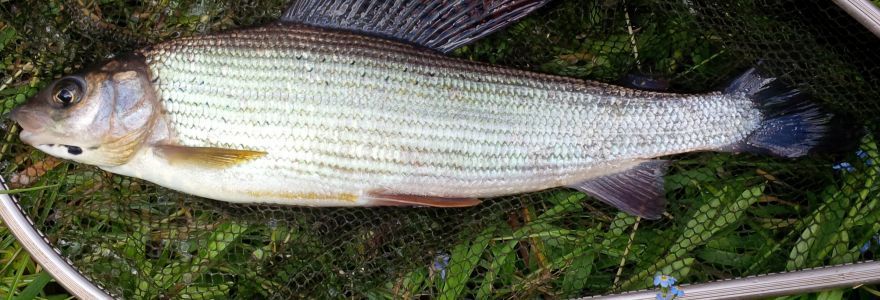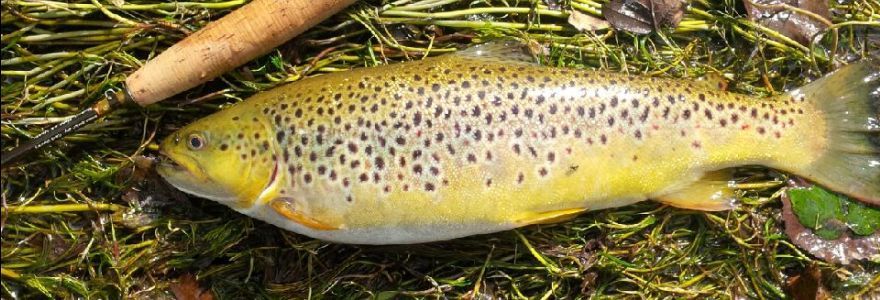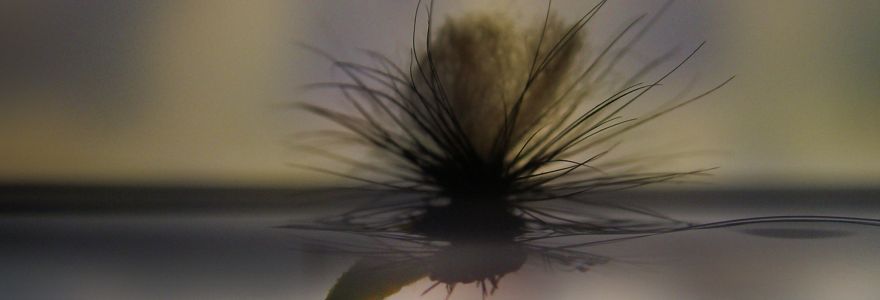Invertebrate Sampling
RIVER INVERTEBRATE SAMPLING
– adapted from FSC (Field Studies Council) Riverfly Partnership ‘River invertebrate monitoring for anglers’.
Advice to those interested.
SITE SELECTION
Things to consider:
Safety: access, depth, structure of river bed eg silt, boulders etc, flow
Change: is the site subject to change through the season eg dry in low water, too deep in high ‘normal’ conditions, excessive weed growth in summer?
Typical: does the site have a mix of habitats that are reasonable representation of the beat? For example does the beat have a mix of shallows/depth, gravel, weed, silt, etc. A mix is preferable and the sample can be split and some taken from each. The sample mix must be repeated at each time point. It is important that a person with experience of the water is on hand to select the site as depth, weed etc may change during the season.
Note: depths of 1-3 feet in areas of reasonable to fast flow and good light represent the ideal conditions for (trout loving) invertebrate growth. Include weed areas if the beat has good growth. Areas of silt are useful for monitoring mayfly if the beat has a good hatch. Published concerns over repeated monitoring from the same site have not been substantiated in my experience.
Repeatability: it is important to try and repeat the sampling in exactly the same way each month from the way the site is sampled, the way the sample is treated and then counted. It is the differences we are looking for rather than the absolute figures. This may differ from the ideal but we are but mere amateurs and volunteers and what we are looking for is any change in the health of our river.
SAMPLING METHOD
Sampling summary: the standard method is a three minute kick/sweep sample with a one minute manual search.
Sampling: having established the site roughly estimate the typical mix of habitats as a percentage of the total.
Thus, if there is roughly a third gravel bed in a reasonable flow then sample for one minute. If weed is one sixth then sample for 30 seconds etc etc. The repeatability is more important than the precise ratio. Experience teaches that unless there are large pieces (ie too large for netting) of rock/gravel these can be examined as part of the sample and the additional minute manual search may be superfluous.
Kick sampling: this is simply resting the base of the sampling net on the river bed downstream of your boots and disturbing the bed in front of the net for the set time. It is usually best to decant the sample from the net after each set time into a white plastic bucket (about quarter full of water) to avoid excessive strain or potential sample loss. Weed beds can be swept for the set time or disturbed by boots. I prefer the latter. Note: there is no real need for excessive disturbance as this tends to put more gravel and rubbish into the sample for little increase in invertebrates.
Washing the sample: this is especially important for the Ness waters which can have a lot of silt, fine gravel, moss and weed. The recommended method is to rinse at the water side. I have found it easier to do this away from the water (I use the tail gate of a 4 x 4 or a table – easier on older backs). To do this we need to take away a good bucket of spare river water. One exception is if there is a lot of silt in the sample making the water cloudy. This is best treated on the river by part filling the net with sample and inserting onto the river flow (facing upstream!), agitating the contents and hoping the flow takes away the silt. I find that washing gravel three times in fresh water and saving the water saves most of the sample. Rinsing weed is more difficult as we usually have a mix of moss and weed and the bugs are difficult to dislodge. Rinse three times and you will still have to search for the stoneflies and caseless caddis. And pick these off. Attention to good washing saves much time when counting.
Sorting the sample: portions of the sample are transferred to the main display tray (usually 3-5 times per session).
The classical treatment is to transfer each bug one at a time into the divided sample counting tray. I would recommend this to start until confidence is gained when samples can be counted in the main display tray. However even after three years sampling I find I still frequently need to transfer some individual specimens for identification under the magnifier.
IDENTIFICATION AND COUNTING THE SAMPLE
The AMI method list is follows:
Cased caddis
Caseless caddis
Mayfly
Blue winged olive
Flat bodied Heptageniidae
Olives Baetidae
Stoneflies
Gammarus
My preferred interpretation of the same list, for better or worse, is
ORDER FAMILY
Trichoptera Cased caddis - many families are included here
Caseless caddis eg Hydropsychidae/Rhyacophilidae families
Ephemeroptera Ephemeridae UK is mayfly
There are other families not covered
Ephemerellidae UK is mainly blue winged olive
Heptageniidae stone clingers – many species
Baetidae olives – many species
Plecoptera Stoneflies – seven families many species
Amphipoda Gammaridae mainly Gammarus/shrimps
There is a very good introductory pamphlet published by the FSC for the Riverfly initiative. Unfortunately this seems to be only available to those attending the AMI courses. I have produced some laminated copies of the important bits for Ness use.
In addition I have FSC publications giving more detail of the Trichoptera, Ephemeroptera and Plecoptera should anyone want more detail – although this is not necessary to undertake the sampling. I also have several books should anyone be interested.
From experience the easiest key to identification is the nymph movement – stoneflies move differently to the Ephemeroptera and each of the latter also move differently. Some may recall the often quoted classification of Ephemopteran nymphs into burrowers (mayfly), agile darters (olives), stone clingers (Heptageniidae) and crawlers (Ephemerellidae). Kite I think introduced a couple more but these are not really useful.
From experience I found the following identifications tricky:
Caseless caddis from beetle larvae. Some beetle larvae become obvious but others need a good lens to examine the posterior segment. Unfortunately there are quite a few in Ness samples.
Blue winged olive nymphs. This can be a nightmare depending on their age. They look similar to Baetis but differ in movement – much slower and don’t move far– but sometimes the agile darters rest! The best way is to separate into the sample tray and, via the lens, examine the body and gills.
Unfortunately the books show nice pictures of typical nymphs but in practice they can vary greatly in size, colour and shade – generally the darker the nearer they are to hatching, especially when the wing buds are prominent. Hatching sometimes happens in the tray in summer.
One handy hint: when emptying the large sample tray it is best done carefully. Often you will find large numbers of Heptageniidae, sometimes very small, that may have been missed in the original count – they have a habit of hiding amongst gravel or weed and one can also see why they are called ‘clingers’ – a devil to rinse into the return bucket. Also some small stoneflies may also have been missed.
Another handy hint: after transferring a sample from the bucket to the large tray try to avoid any disturbance for a few minutes. Cased caddis can be difficult to see (empty cases don’t count!). However, if left undisturbed for a while the pupae begin to emerge and thus become much easier to spot.
CLEANLINESS
It is very important to clean and disinfect equipment after each session, particularly if the equipment may be used elsewhere. Pay attention to the brushes and sampling tubes.
It is preferable to thoroughly rinse to remove all traces of the river and then dry soon after use. If left for some time I find it better to leave the buckets and particularly the net in a dilute bleach (only the net – not the metal part – it will corrode) to remove the peat/iron stains. Then follow with thorough rinse and dry.
SAMPLES
For those who wish to take samples away for study (or tying templates) it is best to preserve in 70% alcohol in plastic tubes. These can be provided if required.
SAMPLING TIMING
Ideally monthly.
Weather: avoid spate water as not typical and may be dangerous. Heavy rain is to be avoided as it becomes difficult to observe the samples.
GENERAL ADVICE
As part of the kit I always carry antiseptic gel and hand wipes. Apart from the danger of Weils disease many waters are contaminated by both human and animal waste. Look at the algae in the summer.
I find at least 3 large buckets (with handles!) are essential – one for the sample, one for the spare water and one for the part samples once examined. I always return all the samples to the river. In addition a small jug and small bucket are useful during sample washing.
Although not a supermarket fan I find their large heavy duty bags ideal for carrying kit to the water (Aldi is the best, big and strong). I also tend to wrap dry and wet gear in separate plastic gripper bags.
Thigh waders are fine (if you find you need more you are in the wrong place).
Occasionally I check the pH of the water – sometimes by paper strips or better by samples and laboratory pH meter. I can check this if you wish. Our sampling site is about pH 7.5 – 7.7. In other words on the alkaline side which is good.
I also have a check list for equipment – and yes, I have on occasion forgotten the net.
Plastic pails/buckets - 2 large (say 20 litres), 1 medium (say 10 litres), 1 small (say 2-5 litres)
Net
Large sample tray
Sample examination tray
Magnifier
Hand lens
Stopwatch – or wristwatch will do
2 sampling basters
Assorted brushes (artists) and spoons – sometimes easier/quicker for sample transfer than the basters
Paper and pens
Riverfly guide(s)
Paper towels, antiseptic solution and wipes.
– adapted from FSC (Field Studies Council) Riverfly Partnership ‘River invertebrate monitoring for anglers’.
Advice to those interested.
SITE SELECTION
Things to consider:
Safety: access, depth, structure of river bed eg silt, boulders etc, flow
Change: is the site subject to change through the season eg dry in low water, too deep in high ‘normal’ conditions, excessive weed growth in summer?
Typical: does the site have a mix of habitats that are reasonable representation of the beat? For example does the beat have a mix of shallows/depth, gravel, weed, silt, etc. A mix is preferable and the sample can be split and some taken from each. The sample mix must be repeated at each time point. It is important that a person with experience of the water is on hand to select the site as depth, weed etc may change during the season.
Note: depths of 1-3 feet in areas of reasonable to fast flow and good light represent the ideal conditions for (trout loving) invertebrate growth. Include weed areas if the beat has good growth. Areas of silt are useful for monitoring mayfly if the beat has a good hatch. Published concerns over repeated monitoring from the same site have not been substantiated in my experience.
Repeatability: it is important to try and repeat the sampling in exactly the same way each month from the way the site is sampled, the way the sample is treated and then counted. It is the differences we are looking for rather than the absolute figures. This may differ from the ideal but we are but mere amateurs and volunteers and what we are looking for is any change in the health of our river.
SAMPLING METHOD
Sampling summary: the standard method is a three minute kick/sweep sample with a one minute manual search.
Sampling: having established the site roughly estimate the typical mix of habitats as a percentage of the total.
Thus, if there is roughly a third gravel bed in a reasonable flow then sample for one minute. If weed is one sixth then sample for 30 seconds etc etc. The repeatability is more important than the precise ratio. Experience teaches that unless there are large pieces (ie too large for netting) of rock/gravel these can be examined as part of the sample and the additional minute manual search may be superfluous.
Kick sampling: this is simply resting the base of the sampling net on the river bed downstream of your boots and disturbing the bed in front of the net for the set time. It is usually best to decant the sample from the net after each set time into a white plastic bucket (about quarter full of water) to avoid excessive strain or potential sample loss. Weed beds can be swept for the set time or disturbed by boots. I prefer the latter. Note: there is no real need for excessive disturbance as this tends to put more gravel and rubbish into the sample for little increase in invertebrates.
Washing the sample: this is especially important for the Ness waters which can have a lot of silt, fine gravel, moss and weed. The recommended method is to rinse at the water side. I have found it easier to do this away from the water (I use the tail gate of a 4 x 4 or a table – easier on older backs). To do this we need to take away a good bucket of spare river water. One exception is if there is a lot of silt in the sample making the water cloudy. This is best treated on the river by part filling the net with sample and inserting onto the river flow (facing upstream!), agitating the contents and hoping the flow takes away the silt. I find that washing gravel three times in fresh water and saving the water saves most of the sample. Rinsing weed is more difficult as we usually have a mix of moss and weed and the bugs are difficult to dislodge. Rinse three times and you will still have to search for the stoneflies and caseless caddis. And pick these off. Attention to good washing saves much time when counting.
Sorting the sample: portions of the sample are transferred to the main display tray (usually 3-5 times per session).
The classical treatment is to transfer each bug one at a time into the divided sample counting tray. I would recommend this to start until confidence is gained when samples can be counted in the main display tray. However even after three years sampling I find I still frequently need to transfer some individual specimens for identification under the magnifier.
IDENTIFICATION AND COUNTING THE SAMPLE
The AMI method list is follows:
Cased caddis
Caseless caddis
Mayfly
Blue winged olive
Flat bodied Heptageniidae
Olives Baetidae
Stoneflies
Gammarus
My preferred interpretation of the same list, for better or worse, is
ORDER FAMILY
Trichoptera Cased caddis - many families are included here
Caseless caddis eg Hydropsychidae/Rhyacophilidae families
Ephemeroptera Ephemeridae UK is mayfly
There are other families not covered
Ephemerellidae UK is mainly blue winged olive
Heptageniidae stone clingers – many species
Baetidae olives – many species
Plecoptera Stoneflies – seven families many species
Amphipoda Gammaridae mainly Gammarus/shrimps
There is a very good introductory pamphlet published by the FSC for the Riverfly initiative. Unfortunately this seems to be only available to those attending the AMI courses. I have produced some laminated copies of the important bits for Ness use.
In addition I have FSC publications giving more detail of the Trichoptera, Ephemeroptera and Plecoptera should anyone want more detail – although this is not necessary to undertake the sampling. I also have several books should anyone be interested.
From experience the easiest key to identification is the nymph movement – stoneflies move differently to the Ephemeroptera and each of the latter also move differently. Some may recall the often quoted classification of Ephemopteran nymphs into burrowers (mayfly), agile darters (olives), stone clingers (Heptageniidae) and crawlers (Ephemerellidae). Kite I think introduced a couple more but these are not really useful.
From experience I found the following identifications tricky:
Caseless caddis from beetle larvae. Some beetle larvae become obvious but others need a good lens to examine the posterior segment. Unfortunately there are quite a few in Ness samples.
Blue winged olive nymphs. This can be a nightmare depending on their age. They look similar to Baetis but differ in movement – much slower and don’t move far– but sometimes the agile darters rest! The best way is to separate into the sample tray and, via the lens, examine the body and gills.
Unfortunately the books show nice pictures of typical nymphs but in practice they can vary greatly in size, colour and shade – generally the darker the nearer they are to hatching, especially when the wing buds are prominent. Hatching sometimes happens in the tray in summer.
One handy hint: when emptying the large sample tray it is best done carefully. Often you will find large numbers of Heptageniidae, sometimes very small, that may have been missed in the original count – they have a habit of hiding amongst gravel or weed and one can also see why they are called ‘clingers’ – a devil to rinse into the return bucket. Also some small stoneflies may also have been missed.
Another handy hint: after transferring a sample from the bucket to the large tray try to avoid any disturbance for a few minutes. Cased caddis can be difficult to see (empty cases don’t count!). However, if left undisturbed for a while the pupae begin to emerge and thus become much easier to spot.
CLEANLINESS
It is very important to clean and disinfect equipment after each session, particularly if the equipment may be used elsewhere. Pay attention to the brushes and sampling tubes.
It is preferable to thoroughly rinse to remove all traces of the river and then dry soon after use. If left for some time I find it better to leave the buckets and particularly the net in a dilute bleach (only the net – not the metal part – it will corrode) to remove the peat/iron stains. Then follow with thorough rinse and dry.
SAMPLES
For those who wish to take samples away for study (or tying templates) it is best to preserve in 70% alcohol in plastic tubes. These can be provided if required.
SAMPLING TIMING
Ideally monthly.
Weather: avoid spate water as not typical and may be dangerous. Heavy rain is to be avoided as it becomes difficult to observe the samples.
GENERAL ADVICE
As part of the kit I always carry antiseptic gel and hand wipes. Apart from the danger of Weils disease many waters are contaminated by both human and animal waste. Look at the algae in the summer.
I find at least 3 large buckets (with handles!) are essential – one for the sample, one for the spare water and one for the part samples once examined. I always return all the samples to the river. In addition a small jug and small bucket are useful during sample washing.
Although not a supermarket fan I find their large heavy duty bags ideal for carrying kit to the water (Aldi is the best, big and strong). I also tend to wrap dry and wet gear in separate plastic gripper bags.
Thigh waders are fine (if you find you need more you are in the wrong place).
Occasionally I check the pH of the water – sometimes by paper strips or better by samples and laboratory pH meter. I can check this if you wish. Our sampling site is about pH 7.5 – 7.7. In other words on the alkaline side which is good.
I also have a check list for equipment – and yes, I have on occasion forgotten the net.
Plastic pails/buckets - 2 large (say 20 litres), 1 medium (say 10 litres), 1 small (say 2-5 litres)
Net
Large sample tray
Sample examination tray
Magnifier
Hand lens
Stopwatch – or wristwatch will do
2 sampling basters
Assorted brushes (artists) and spoons – sometimes easier/quicker for sample transfer than the basters
Paper and pens
Riverfly guide(s)
Paper towels, antiseptic solution and wipes.
Mail: mymail@mailservice.com
Phone: 555-555-5555



